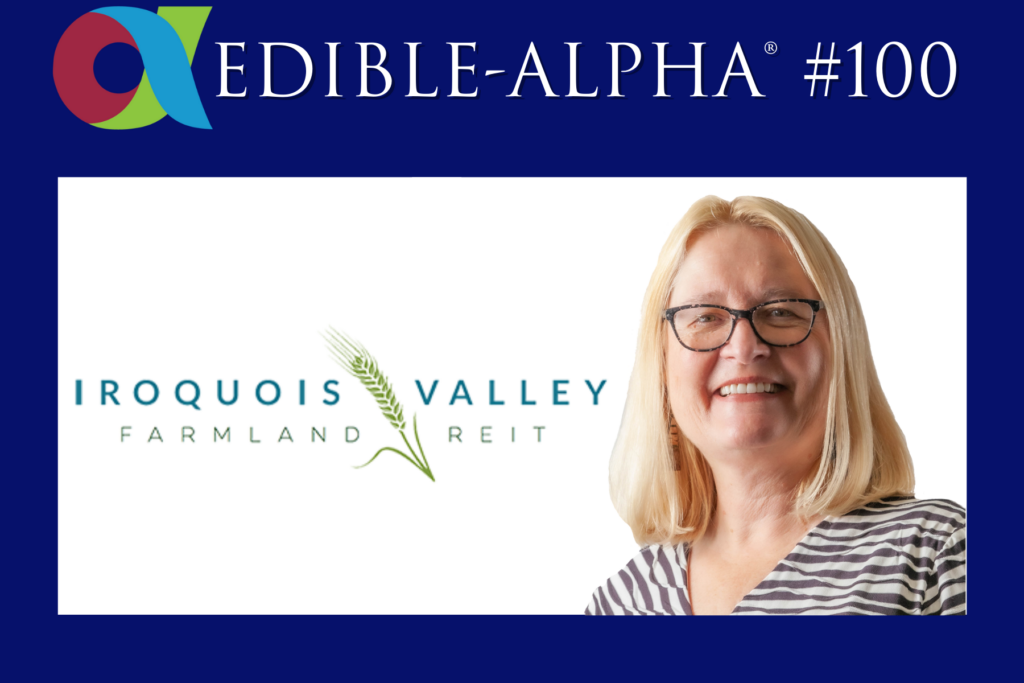Subscribe: Apple Podcasts | Spotify | Amazon Music | iHeartRadio | RSS | More
In Edible-Alpha® podcast #100, we bring back FFI founder Tera Johnson, who is now CEO of Iroquois Valley Farmland REIT, an organic farmland finance company. She was the featured presenter for our October 26 “Enhancing Farm Revenues with Conservation Practices & Ecosystem Services” webinar, which forms the basis of this podcast.
Tera defines ecosystem services on-farm conservation practices and structural improvements that farmers can get at least partially reimbursed or credited for. Examples include converting cropland to CRP, planting riparian buffers to protect waterways, acquiring high tunnels for controlled growing, or leasing space for solar arrays. Farmers can sometimes stack these practices, purposing the same piece of land for multiple benefits and credits.
The USDA’s Natural Resources Conservation Service (NRCS) has a thick catalog of programs and initiatives for farmers, and the financial kickbacks can be significant. However, the options can be tricky to wade through and understand which would make sense on an individual farm. Some USDA offices provide excellent assistance, but this isn’t always the case.
Some conservation practices, such as nutrient mitigation, are gaining traction with other sectors as well. More county and municipal governments and sewage districts are incentivizing farmers to keep phosphorus and other nutrients on-farm and out of waterways. Farmer incentives for solar installation are gaining steam, too, especially in the expansive, sunny West.
The financial benefits of these programs for farmers can be significant. However, the reimbursement process may be complex and drawn out. Sometimes farmers must foot the bill upfront, or their exact earnings may be outcome dependent, such as solar- or wind-power generation.
Next, Tera and Andy discuss carbon sequestration, a key tenet of regenerative ag—and a hot topic lately, with more and more stakeholders incentivizing farmers to capture carbon in the soil. But, as Tera notes, we’re in the Stone Age of this market, so it’s kind of a Wild West, lacking universal measurement or impact standards. Many farmers are receiving offers from carbon credit buyers, but don’t know who to trust. And whether organic and regenerative farmers who’ve been sequestering carbon for years are being justifiably recognized or compensated for their efforts is still murky. Tera says these kinks should all get ironed out eventually, as this is clearly the future of ag.
Webinar participant Marie Raboin, who works in phosphorous crediting and adaptive management in Dane County, Wisconsin, while also running Brix Cider, adds important context to the discussion: Even though science shows many conservation practices work, farmers aren’t always eager adopters. This requires them to think very differently about their farm, and they need to feel like they can trust the people and organizations propositioning them. Marie says farm businesses work very differently than most, and outside parties must respect their culture, language and way of doing things.
Despite the complexities and yet-to-be-worked-out aspects of ecosystem services and conservation practices, both Tera and FFI strongly believe they are well worth farmers exploring for their many environmental and economic benefits.

